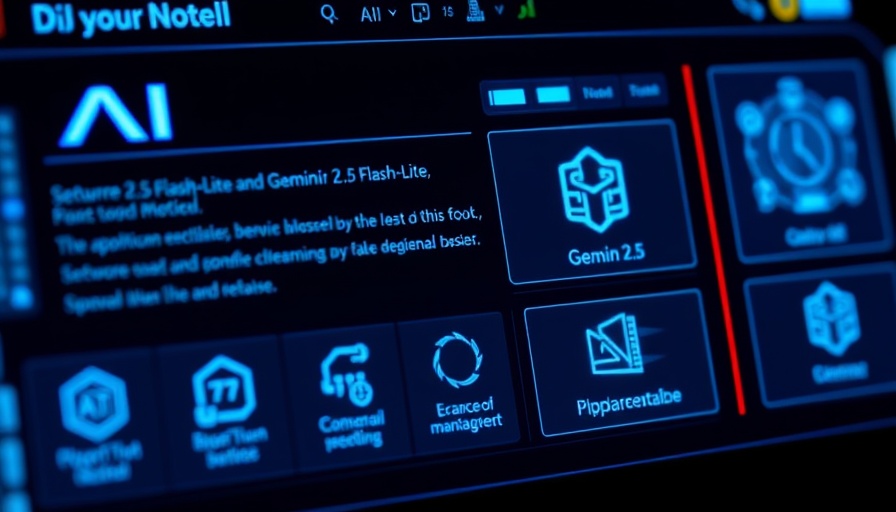
Gemini 2.5 Flash-Lite: A New Era for AI Development
In the rapidly evolving landscape of artificial intelligence, Gemini 2.5 Flash-Lite stands out as a remarkable advancement. Released on July 22, 2025, this powerful model is making waves not only for its impressive performance but also for its cost efficiency. As the fastest and most affordable model in the Gemini family, it paves the way for scaling AI applications in various industries.
Unpacking the Cost-Effectiveness of Gemini 2.5 Flash-Lite
Gemini 2.5 Flash-Lite's pricing, at $0.10 per million input tokens and $0.40 per million output tokens, is tailored for businesses looking to maximize output while minimizing costs. Developers and companies can handle significant workloads without breaking the bank, making this model incredibly appealing for startups and large enterprises alike. With a 40% reduction in audio input pricing since its preview launch, adopting this technology becomes even more practical.
Speed and Quality: The Balancing Act
One of the standout features of Gemini 2.5 Flash-Lite is its class-leading speed. When compared to its predecessors, it exhibits lower latency on various prompts, making it an ideal choice for latency-sensitive applications like translation and classification. The introduction of a 1 million-token context window and controllable thinking budgets enhances its abilities, allowing developers to build richer, more interactive experiences.
Real-World Applications that Showcase Innovation
The true potential of Gemini 2.5 Flash-Lite can be seen through its application across different sectors. For instance, Satlyt, a company focused on decentralized space computing, reports a 45% reduction in latency for critical processes through this model. Similarly, HeyGen utilizes Gemini 2.5 Flash-Lite to perform automatic video planning and global translation of content, showcasing how AI can drive personalization at scale. Companies like DocsHound are leveraging this model to transform lengthy product demos into concise documentation, speedily creating training resources for AI applications.
Ethical Considerations and Future Trends in AI
As we welcome innovations like Gemini 2.5 Flash-Lite into mainstream use, it prompts important discussions about the ethical implications of AI technologies. While efficiency and cost savings are undeniable, navigating ethical considerations around transparency, bias, and the impact on jobs remains critical. Understanding how to implement AI responsibly is paramount as it continues to merge into various sectors like healthcare, education, and marketing.
Getting Started with Gemini 2.5 Flash-Lite
For tech enthusiasts and developers eager to experiment with this cutting-edge model, integration is a breeze. Simply specify ("gemini-2.5-flash-lite") in your code to start leveraging its capabilities. As the tech landscape evolves, the demand for tools that enhance productivity while addressing ethical considerations will only grow. Opposed to remaining on the sidelines, now is the time to dive into AI innovation.
 Add Row
Add Row  Add
Add 




Write A Comment